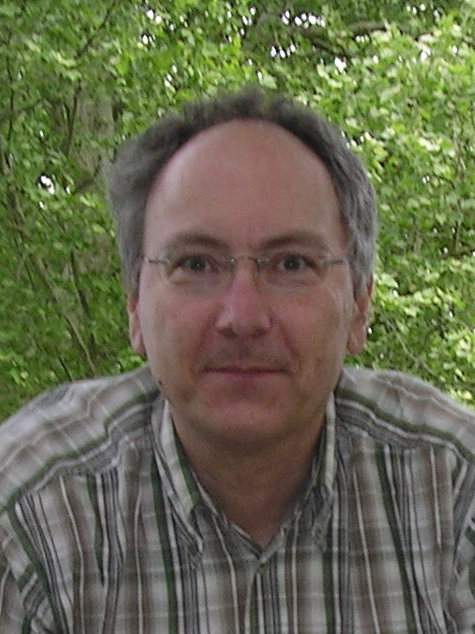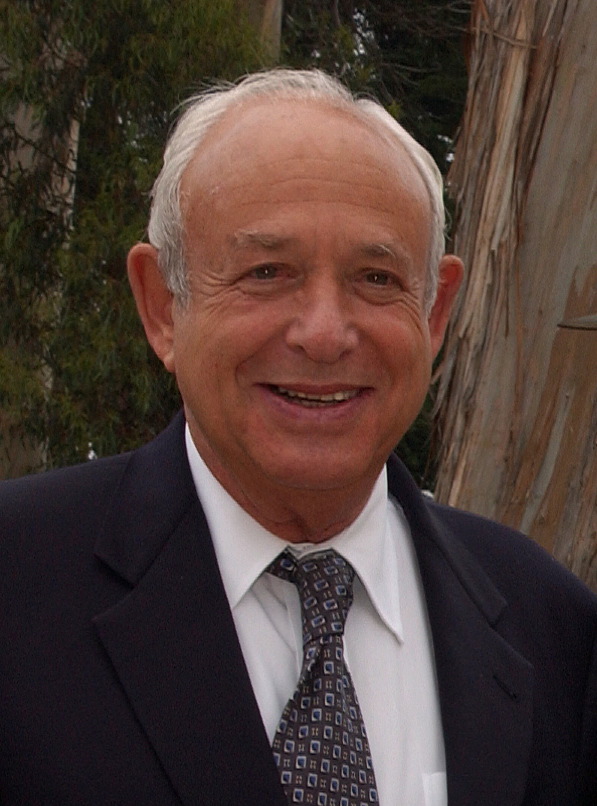This month we talk with a few authors from the Molecular Materials themed issue. Below, you can meet my selection of 5 authors from this issue. Many thanks to them for agreeing to play the game of “who are you?”!
An excellent BODIPY dye containing a benzo[2,1,3]thiadiazole bridge as a highly selective colorimetric and fluorescent probe for Hg2+ with naked-eye detection
Hui-Bin Sun, Shu-Juan Liu, Ting-Chun Ma, Nan-Nan Song, Qiang Zhao and Wei Huang
New J. Chem., 2011, 35, 1194-1197; DOI: 10.1039/C0NJ00850H

Our first profile is of Professor Wei Huang, who is Deputy President of Nanjing University of Posts and Telecommunications (P. R. China) and director general of the Key Laboratory for Organic Electronics & Information Displays. His research covers organic and plastic electronics, chemo- and biosensors, information materials and devices, nano materials and technology, bioelectronics.
In his NJC paper, Wei and colleagues propose a new probe to monitor mercury ions, an important polluant, using optical and electrochemical signaling to achieve high selectivity and sensitivity.
Wei notes: “We have been interested in the field of chemo and biosensors for many years and have published many research papers in this field. We wish to develop a series of excellent optical probes for cations, anions, and biomolecules, etc. The research idea of this work was stimulated and formed by our previous work. We chose mercury as the target analyte because of its high toxicity and BODIPY dye as probe because of its excellent photophysical properties.”
When asked what you wanted to be when he was young, Wei replied: “I was dreaming of being a scientist who may create some wonderful high-tech products for mankind. It would be very difficult for me to think of my not being a chemist since I am very fond of chemistry.”
.
A monolayer of a Cu2+-tetraazamacrocyclic complex on glass as the adhesive layer for silver nanoparticles grafting, in the preparation of surface-active antibacterial materials
Piersandro Pallavicini, Giacomo Dacarro, Lucia Cucca, Frank Denat, Pietro Grisoli, Maddalena Patrini, Nicolas Sok and Angelo Taglietti
New J. Chem., 2011, 35, 1198-1201; DOI: 10.1039/C0NJ00829J

Piersandro Pallavicini is Associate Professor in the Chemistry Department of the University of Pavia (Italy). His research interests center on the synthesis of inorganic nano-objects, modification of inorganic surfaces, coordination chemistry and sensing in micellar nanocontainers.
Piersandro remarks that “classical coordination chemistry is rarely carried out on surfaces. Despite this, I believe that all the enormously developed coordination chemistry in solution, particularly in the macrocyclic ligands area, could bring brilliant and precious features to the chemistry of self-assembled monolayers on bulk surfaces. Our paper is just one suggestion of what can be done.”
This project came into being thanks to the collaboration of the Pavia group with that of Frank Denat at the Université de Bourgogne, in Dijon (France).
“The Dijon team has developed an arsenal of brilliant strategies for the synthesis of polyaza macrocyclic ligands, and we were working together since some years on functional tetraaza macrocycles for the assembly of molecular devices in micellar containers. In the meantime we had started working on the modification of surfaces to impart them antibacterial properties by means of the release of inorganic cations. The idea of preparing a surface with a SAM capable of bearing (and eventually releasing) two antibacterial cations, Cu2+ and Ag+, led us to this project.”
Piersandro is another chemist with an early vocation: “I was resolutely oriented towards chemistry since when I was a child. As a 9 years old boy I monopolized an entire room in our house, that became my laboratory and that I stuffed with all the Chemistry Sets available on the toys market. I love to be a chemist.”
.
[K2Mn5{Mo(CN)7}3]: an open framework magnet with four Tc conversions orchestrated by guests and thermal history
Julie Milon, Philippe Guionneau, Carine Duhayon and Jean-Pascal Sutter
New J. Chem., 2011, 35, 1211-1218; DOI: 10.1039/C0NJ00860E

Our next author is Jean-Pascal Sutter, a CNRS research director in the Coordination Chemistry Laboratory located in Toulouse (France). He works on material-directed coordination and supramolecular chemistry, more specifically on molecular magnets and open-framework materials.
In commenting on his NJC paper, Jean-Pascal says: “It is often considered that porous frameworks and exchange-based magnetism are antagonist properties in terms of performances; the reported magnet demonstrates that a porous framework can be achieved with good magnetic performances. Modest porosity (28%) is sufficient to observe fast and efficient sorption processes by the framework that permit converting the attributes of the corresponding magnets.”
Jean-Pascal continues that this research project came about “as often in research, by serendipity! The idea to adapt the structural features to favor labile ligand exchange formed back in 2003, when we observed that the loss of a ligand by a metal ion did significantly increase the ordering temperature of a magnet.”
If he couldn’t be a chemist, Jean-Pascal replied: “Difficult question; most certainly something where creativity is also important.” He sounds hesitant to even envisage the possibility of not being a chemist!
.
Controlled growth of core@shell heterostructures based on Prussian blue analogues
M. Presle, J. Lemainque, J.-M. Guigner, E. Larquet, I. Maurin, J.-P. Boilot and T. Gacoin
New J. Chem., 2011, 35, 1296-1301; DOI: 10.1039/C0NJ00857E

Isabelle Maurin is also a CNRS research scientist, working at the Laboratoire de Physique de la Matière Condensée at the Ecole Polytechnique in Palaiseau (France).
Isabelle has been working in the field of photo-induced phase transitions in molecular solids since 2003. “Together with a better understanding of the local and macroscopic structural changes associated to these transitions, I have been trying since 2009 to extend the concept of molecular photomagnetism to multiferroic-like heterostructures based on the combination of photostrictive and piezomagnetic compounds. The first key issue was the control of the chemical composition in the heterostructure, which is is the object of the paper published in NJC.”
Before choosing chemistry, Isabelle considered become “an archeologist to combine travels in territories with high cultural inheritance (Egypt, Persia …), history and research.”
.
Electrochromic devices and thin film transistors from a new family of ethylenedioxythiophene based conjugated polymers
Zhongtao Li, Yuan Zhang, Amanda L. Holt, Borys P. Kolasa, Justin G. Wehner, Andreas Hampp, Guillermo C. Bazan, Thuc-Quyen Nguyen and Daniel E. Morse
New J. Chem., 2011, 35, 1327-1334; DOI: 10.1039/C0NJ00837K

Our last profile is of Professor Daniel Morse, who is currently Emeritus Founding Director of the UCSB-MIT-Caltech Institute for Collaboratoive Biotechnologies, as well as Wilcox Professor of Biomolecular Science and Engineering at UCSB (University of California Santa Barbara, USA). His research theme is bio-inspired routes to materials with advanced functionalities.
In their NJC paper, Dan and his colleagues synthesized a new family of electrochromic polymers that show switchable absorption in the infrared in the absence of water. “These offer promise for electrically activated solid-state shutters and filters in the IR, since their high charge transfer mobility and ion injection efficiency permits relatively rapid switching and good switchable contrast, while their robustness and longevity exceed those of aqueous devices.”
This work had its inspiration in nature, as Dan recounts it: “We recently discovered the molecular mechanisms governing the dynamic, tunable changes in color and reflectance that squids and octopi use to change their color and reflectance for camouflage and communication. Our colleagues at Raytheon Vision Systems, Inc., approached us to ask if we might be able to translate these mechanisms to an electrically switchable, synthetic polymer-based filter and shutter for cameras operating in the infrared. This gave rise to the productive and close collaboration that produced the materials and devices described in our paper.”
Apparently this approach is a long-ingrained one for Dan: “I was always fascinated by the natural world, both organic and inorganic, and the mechanisms that make it tick.”
I hope you’ve enjoyed reading this and getting to know some of your fellow chemists a little better. I’m struck how most of them were bitten by the chemistry bug at a very early age. What about you?










